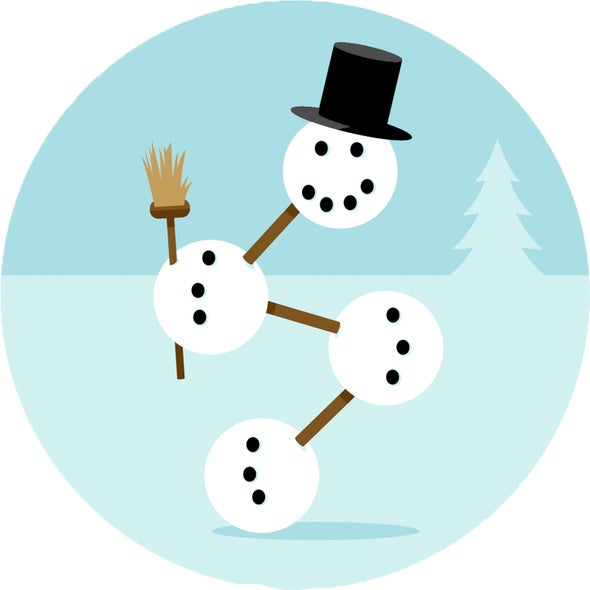Because humans are large and warm, we can rarely see quantum mechanics in action. To do so, physicists use lasers to cool atoms to just a trillionth of a degree above absolute zero. This slows the atoms' movement enough to watch them follow quantum physics rules. But cooling molecules made of more than one atom has proved more difficult: somehow these ultracold molecules tend to sneakily heat up again, so researchers can no longer keep track of them—a phenomenon physicists call “ultracold molecule loss.” A study published in Nature Physics reveals how it happens.
Being able to better see and control ultracold molecules would help scientists assemble a quantum machine piece by piece, says Jun Ye, a physicist at the University of Colorado Boulder, who was not involved in the study. But molecule heating throws a wrench in this process. A pioneer of ultracold molecule experiments, Ye observed early on that reactions—a matter of quantum chemistry instead of quantum physics—were somehow heating molecules up.
Yu Liu, a researcher at Harvard University and co-leader of the study, says the researchers had planned to investigate the reactions themselves. But, Liu says, “what we saw during the process turns out to give the answer to this question” of ultracold molecule loss. The scientists slowed down the chemical reactions between molecules enough to observe their behavior while in a state called “the complex,” which occurs in the middle of the reaction—before the molecules fully transform into the reaction's products. Because molecules interact with light through electrical forces, the team used lasers to keep them from flying away.
At room temperature the complex exists too briefly to observe. At low temperatures it sticks around longer, but the researchers found that this longevity has a cost: it gives the ultracold complex time to interact with the laser light keeping it in place. This interaction heats up the molecules, causing some to lose their ultracold status.
Knowing about this interaction, physicists can now avoid types of lasers that excite the complex. And the ability to see the light-complex interaction is itself promising. Nandini Mukherjee, a Stanford University chemist, who was not involved in the study, says probing the complex is a “long-sought goal in studying reaction mechanisms.”
Liu says the team wants to use laser light to fully control such reactions, and co-lead author Ming-Guang Hu (also at Harvard) adds that this process could eventually illuminate how the rules of quantum mechanics make ultracold molecular reactions different from those at room temperature. Having solved a mystery that has long troubled quantum physicists, they now want to explain a lot more about quantum chemistry.

